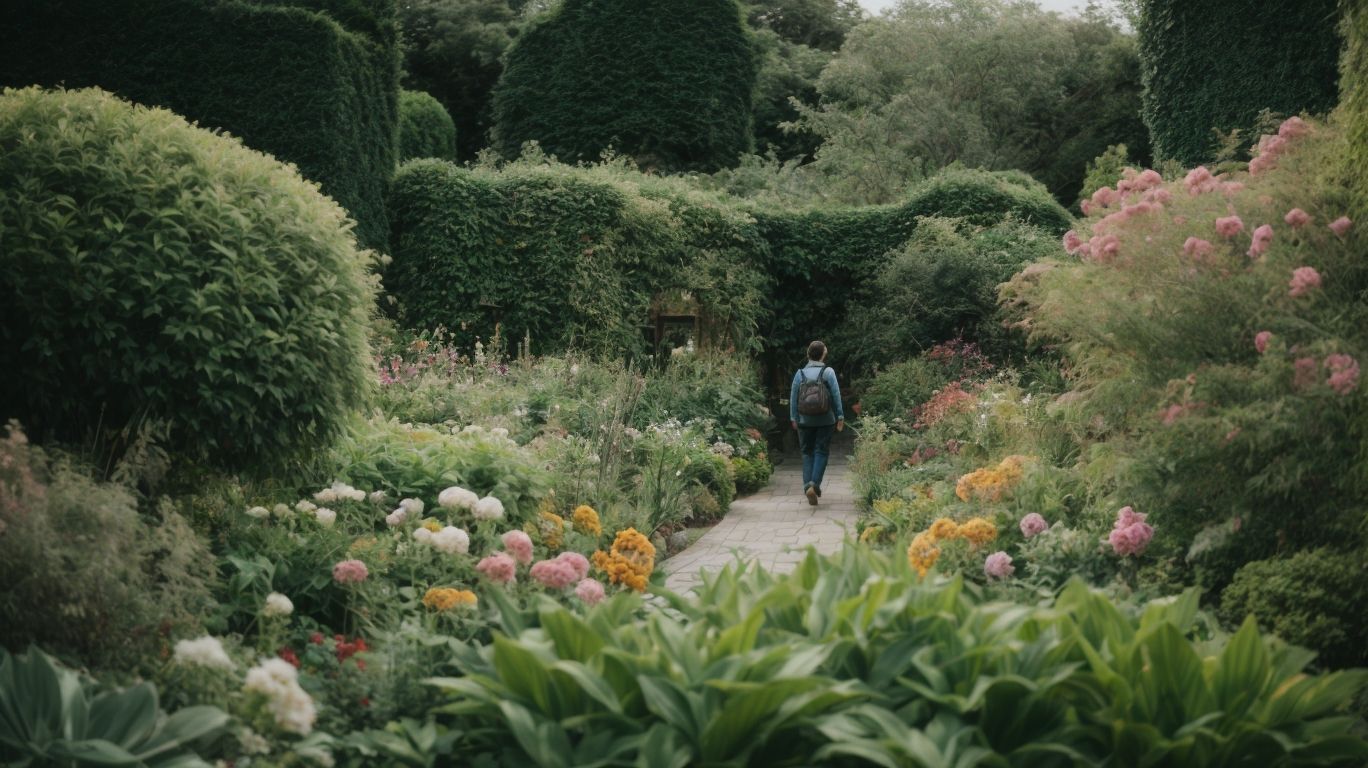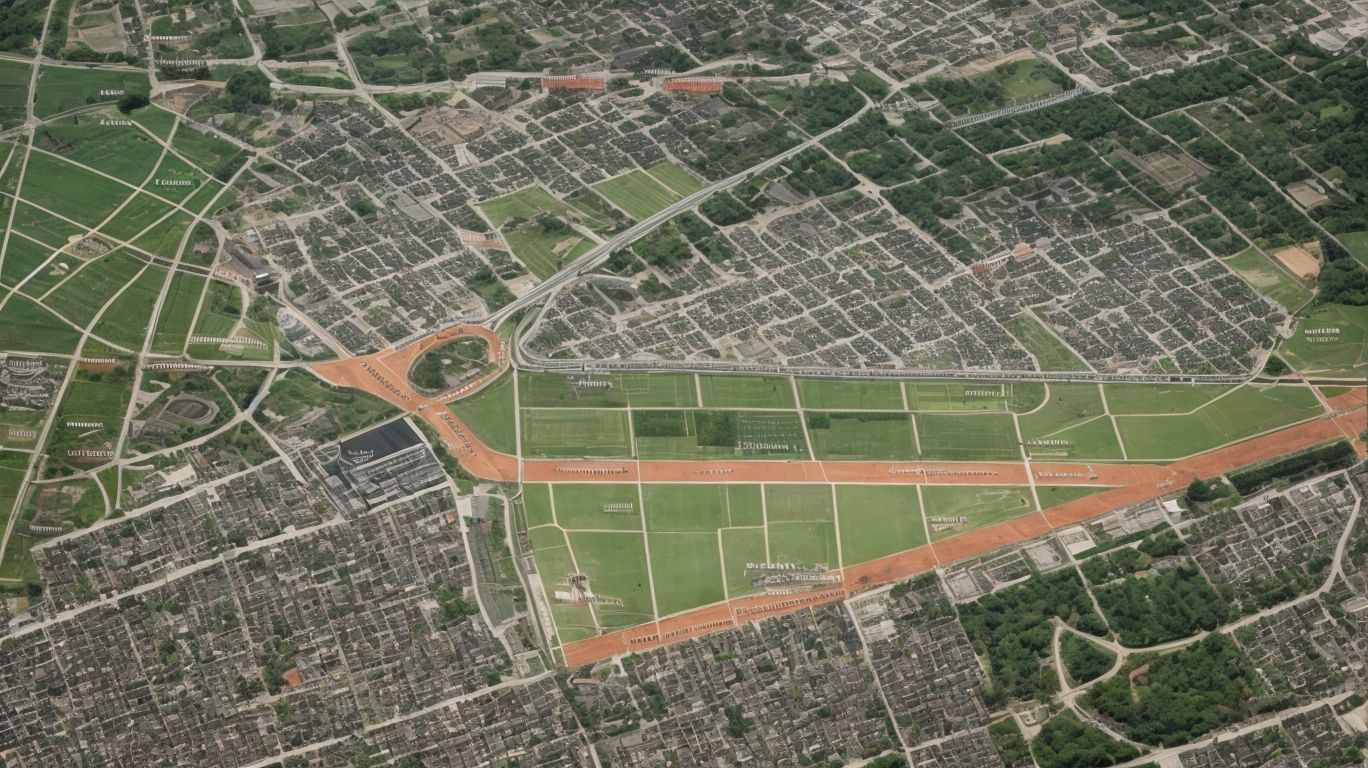Welcome to our guide on demystifying gardening zones in Astoria, Queens, New York. Understanding your gardening zone is crucial for successful gardening, as it provides valuable insights into the climatic conditions, suitable plant varieties, and best practices for your specific location. In this comprehensive article, we will delve into the significance of gardening zones, the climate of Astoria, Queens, common plants in the area, and the best gardening practices.
We will explore how to determine your specific gardening zone in Astoria, including the use of the USDA Plant Hardiness Zone Map and other essential factors to consider. We will highlight the best plants to grow in Astoria, their sunlight and soil requirements, watering and fertilizing needs, as well as tips for preventing common pests and diseases. Whether you are a novice gardener or an experienced enthusiast, this guide will equip you with the knowledge and tools to cultivate a thriving garden in Astoria, Queens, New York.
Key Takeaways:
What Are Gardening Zones?
Gardening zones, also known as planting zones or hardiness zones, are geographical regions defined by the USDA map to indicate the potential for plant survival based on climate conditions and temperature.
These zones serve as a valuable tool for gardeners as they provide insight into the specific environmental requirements that can influence the success of various plant species. Understanding the gardening zones helps gardeners select appropriate plants, determine planting times, and take necessary precautions to protect their gardens from extreme weather conditions.
The USDA map divides the United States and Canada into 13 zones, each representing a 10°F difference in the average annual minimum temperature. This zoning system allows gardeners to assess the cold hardiness of plants and make informed decisions about which species are likely to thrive in their local climate.
Why Is Knowing Your Gardening Zone Important?
Understanding your gardening zone is crucial for successful gardening as it provides essential information about the local climate, weather conditions, and potential exposure to extreme weather events.
By identifying your gardening zone, you can select plants that are well-suited to thrive in your specific environment. Different zones have varying frost dates and temperature ranges, which directly impact the types of plants that will flourish. For instance, if you know that your zone experiences harsh winters, you can focus on resilient cold-hardy plants. This knowledge can help you plan and maintain a garden that is more likely to withstand unpredictable weather patterns and adapt to local conditions.
What Is the Gardening Zone of Astoria, Queens, New York?
The gardening zone of Astoria, Queens, New York, as designated by the USDA map or hardiness map, determines the specific climate and temperature conditions that impact gardening and plant growth in this region.
Astoria, Queens, New York falls within the zone 7b, characterized by an average annual minimum temperature range of 5 to 10 degrees Fahrenheit. This places it within the category of the warm-summer humid continental climate. These climatic conditions influence the selection of plants suitable for this region, prioritizing those that can thrive in these temperature ranges and adapt to the varying weather patterns. Gardeners in Astoria need to pay attention to these temperature characteristics to ensure the successful cultivation of a diverse array of plants.
What Is the Climate of Astoria, Queens, New York?
The climate of Astoria, Queens, New York, is characterized by its temperature variations, seasonal weather patterns, occasional snowfall, and relative humidity, shaping the overall environmental conditions for gardening and outdoor activities.
Astoria experiences a continental climate with hot summers and cold winters. In summer, temperatures can reach highs in the 80s and 90s Fahrenheit, providing the ideal conditions for outdoor events and recreational activities. Winters bring colder weather with temperatures frequently dropping below freezing, leading to picturesque snowfall. The seasonal transitions bring vibrant foliage in fall, accentuating the scenic beauty of the area. Astoria’s proximity to water bodies, like the East River, influences its microclimate, resulting in slightly milder temperatures and increased humidity. These diverse climate attributes contribute to the charm and character of Astoria.
What Are the Common Plants in Astoria, Queens, New York?
Astoria, Queens, New York, is home to a diverse range of common plants suited for its specific gardening zone, offering opportunities for cultivating various flowers, shrubs, and vegetables that thrive in the local climate and planting zones.
The temperate climate in Astoria, Queens, creates an ideal environment for a wide array of plants, including roses, geraniums, and marigolds. Residents can grow an assortment of herbs such as basil, mint, and thyme, as well as vegetables like tomatoes, lettuce, and bell peppers. With the right care and attention, these plants can flourish in the area’s soil conditions and seasonal changes, bringing vibrant colors and fresh produce to local gardens.
What Are the Best Gardening Practices in Astoria, Queens, New York?
Implementing the best gardening practices in Astoria, Queens, New York, involves considerations for the local growing season, potential exposure to extreme weather events, and adherence to frost dates, ensuring optimal plant care and cultivation success.
Astoria’s growing season typically spans from late March to early October, offering ample time for cultivating a diverse array of plants. Given the region’s susceptibility to extreme weather, such as heavy rains and occasional heatwaves, it’s crucial to design a garden that can withstand these conditions, such as by using raised beds and well-drained soil to mitigate waterlogging.
Understanding the local frost dates, which typically range from late October to early April, is essential for determining the best times for planting and protecting sensitive vegetation.
How to Determine Your Specific Gardening Zone in Astoria, Queens, New York?
Determining your specific gardening zone in Astoria, Queens, New York, involves referencing the USDA plant hardiness zone map, considering the local climate variations, and accounting for the potential impact of elevation on plant growth and survival.
The USDA plant hardiness zone map is a valuable tool for gardeners, enabling them to identify the climatic conditions that affect plant growth. In Astoria, Queens, New York, the zone is typically within the 7a range, indicating an average annual minimum temperature of 0 to 5 degrees Fahrenheit. Local nuances, such as urban heat islands and microclimates near major bodies of water, can create variations within the zone. Elevations can also influence temperatures and frost occurrences, therefore impacting gardening choices. It’s essential for gardeners to gather local insights and observations in addition to using the USDA map for accurate zone identification.
What Is the USDA Plant Hardiness Zone Map?
The USDA plant hardiness zone map is a valuable resource for gardeners, depicting distinct geographical zones based on average annual minimum winter temperatures, enabling individuals to identify suitable plant varieties for their specific gardening zone.
By utilizing this map, gardeners can make informed decisions about which plants are likely to thrive in their local climate, taking into account factors such as frost dates, temperature extremes, and microclimates. Each zone represents a 10°F difference in average annual minimum temperatures, allowing gardeners to gauge the suitability of different plant species for their region. The criteria for these zones reflect the average coldest temperature of each area, providing essential guidance for plant selection and landscape planning.
How to Use the USDA Plant Hardiness Zone Map for Astoria, Queens, New York?
Utilizing the USDA plant hardiness zone map for Astoria, Queens, New York, entails identifying the specific zone designation on the map, interpreting temperature and weather data, and aligning it with the local gardening zone to inform plant selection and cultivation decisions.
When examining the map, it is crucial to pinpoint the corresponding zone for Astoria, which provides insights into the average minimum winter temperatures, enabling gardeners to choose plants that can thrive in their specific climate. By cross-referencing this information with local gardening recommendations, individuals can make informed decisions about the suitability of different plant varieties for their gardens.
Understanding the USDA plant hardiness zone map for Astoria, Queens can also assist in evaluating the potential impacts of temperature fluctuations and weather patterns on plant growth. This knowledge helps gardeners anticipate and prepare for environmental conditions, fostering better plant care and maintenance.
What Are the Other Factors to Consider When Determining Your Gardening Zone in Astoria, Queens, New York?
Plus the USDA zone map, other crucial factors to consider when determining your gardening zone in Astoria, Queens, New York, include local climate conditions, elevation influences, and the specific landscape characteristics, all of which contribute to the overall suitability for plant growth and cultivation.
When assessing the local climate conditions, it’s essential to examine the average temperature ranges, precipitation levels, and seasonal variations. Astoria, Queens, New York, experiences a humid subtropical climate, with hot, humid summers and cold, wet winters. These weather patterns significantly impact the types of plants that thrive in the area.
Elevation effects also play a significant role in gardening zone determination. Areas of higher elevation may have cooler temperatures and different soil compositions, affecting the choice of plants and gardening techniques. In Astoria, the varied landscape, including waterfront areas, urban spaces, and residential neighborhoods, creates microclimates that influence plant adaptability and growth.
The specific landscape characteristics, such as soil pH, drainage, and exposure to sunlight, further shape the gardening zones within Astoria. Understanding these elements aids in selecting plants that are well-suited to the local environment, ultimately fostering a successful and vibrant garden.
What Are the Best Plants to Grow in Astoria, Queens, New York?
Astoria, Queens, New York, presents an ideal environment for growing an assortment of plants, including vibrant flowers, resilient shrubs, and nutritious vegetables suited to the local gardening conditions and seasonal variations.
With its moderate climate and rich, well-draining soil, Astoria offers opportunities for cultivating a diverse range of floral varieties. From the colorful blooms of zinnias and marigolds to the elegance of lilies and roses, the options are endless.
Robust shrubs such as lavender and hydrangeas thrive in this region, adding both beauty and resilience to any garden landscape.
What Are the Sunlight and Soil Requirements for These Plants?
Understanding the sunlight and soil requirements for plants in Astoria, Queens, New York, is vital for their successful growth, considering factors such as sunlight exposure, soil composition, and water availability, including precipitation patterns.
For plants in Astoria, Queens, New York, it is essential to select appropriate locations that receive adequate sunlight. Most plants require at least six hours of direct sunlight daily, although some may thrive in partial shade. The sandy loam soil found in this area offers good drainage, which is beneficial for most plants, allowing roots to access oxygen. Incorporating organic matter into the soil can enhance its nutrient content, promoting plant growth and resilience.
Regarding watering, it is crucial to consider the local precipitation patterns prevalent in Astoria. While incorporating a regular watering schedule, it is important to adjust based on rainfall. This ensures that the plants receive the optimal amount of moisture without being overwatered. By understanding and catering to these specific requirements, gardening enthusiasts in Astoria, Queens, can create vibrant and thriving green spaces within their community.
What Are the Watering and Fertilizing Needs of These Plants?
Meeting the watering and fertilizing needs of plants in Astoria, Queens, New York, involves understanding their moisture requirements, fertilization preferences, and the influence of local humidity levels on their overall health and vitality.
Plants in Astoria, Queens, New York, thrive in a climate that experiences distinct seasonal changes. During the humid summers, the moisture requirements of plants vary, necessitating more frequent watering to combat the effects of high humidity. It is crucial to monitor the soil moisture levels carefully to prevent overwatering, which can lead to root rot.
Fertilization strategies also play a vital role in supporting the growth of plants in this area. Understanding the nutrient needs of specific plants is essential for a tailored fertilization plan. The impact of local humidity levels on the absorption of nutrients through the roots should also be considered when determining the frequency and timing of fertilization.
The unique microclimate in Astoria, Queens can influence the rate at which the soil dries out, affecting the watering schedule. During cooler, less humid periods, adjustments to the watering frequency are required to prevent the soil from becoming too dry, which can adversely affect plant health.
What Are the Common Pests and Diseases in Astoria, Queens, New York and How to Prevent Them?
Identifying common pests and diseases in Astoria, Queens, New York, and implementing effective prevention measures are essential for safeguarding the health and vitality of plants, addressing potential threats such as pests, diseases, and related gardening challenges.
In the unique urban environment of Astoria, Queens, the prevalent pests and diseases include aphids, whiteflies, and powdery mildew, which tend to thrive in the warm and humid climate. Birds and rodents can also pose challenges to gardeners and plant enthusiasts.
To combat these issues, regular monitoring and early detection play a crucial role. Implementing integrated pest management strategies, such as promoting biodiversity, using natural predators, and maintaining proper plant nutrition, can significantly reduce the impact of these threats.
Practicing good sanitation by removing fallen leaves and maintaining clean garden beds can prevent the spread of diseases. Choosing resistant plant varieties can also be an effective preventive measure. It is crucial for gardeners in Astoria to stay informed about the specific pests and diseases prevalent in the area and to stay proactive in managing their garden spaces to ensure a thriving, healthy environment for plants and flowers.
Frequently Asked Questions
What are gardening zones and why are they important in Astoria, Queens, New York?
Gardening zones refer to a system used to identify different regions based on climate conditions. These zones are important in Astoria, Queens, New York because they help determine which plants thrive best in a particular area.
What is the gardening zone for Astoria, Queens, New York?
The gardening zone for Astoria, Queens, New York is Zone 7b. This means the average minimum temperature in this area ranges from 5 to 10 degrees Fahrenheit.
Can I still grow plants that are not recommended for Zone 7b in Astoria, Queens, New York?
It is possible to grow plants that are not recommended for Zone 7b in Astoria, Queens, New York, but it may require extra care and protection during extreme weather conditions. It is always best to choose plants that are well-suited for your gardening zone.
What types of plants thrive in gardening Zone 7b in Astoria, Queens, New York?
Some plants that thrive in gardening Zone 7b in Astoria, Queens, New York include tulips, daffodils, lilacs, and peonies. These plants are well-adapted to the climate conditions in this area and can withstand the cold winters and hot summers.
How can I find out the gardening zone for my specific location in Astoria, Queens, New York?
You can find out the gardening zone for your specific location in Astoria, Queens, New York by using an online gardening zone map or by consulting with a local gardening expert. These resources can help you determine the exact zone for your area.
Are there any resources available to help me plan my garden in Astoria, Queens, New York based on gardening zones?
Yes, there are many resources available to help you plan your garden in Astoria, Queens, New York based on gardening zones. You can consult gardening books, online forums, and local gardening clubs to get tips and advice on which plants are best suited for your gardening zone.


